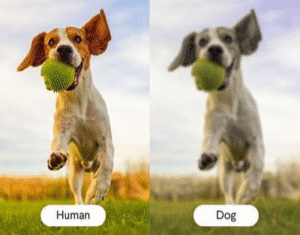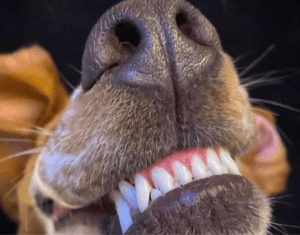Buster, a dog from Oklahoma, experienced a stunning transformation after developing vitiligo, a rare skin condition that causes pigment loss. His owner, Matt Smith, first noticed small white patches forming around Buster’s eyes and chin. Over the next two and a half years, these patches gradually spread until Buster’s once jet-black coat turned entirely white.
Despite its striking visual effect, vitiligo is purely cosmetic and does not impact a dog’s overall health or well-being. This condition occurs when melanocytes, the pigment-producing cells in the skin and piel, stop functioning or disappear. While vitiligo is uncommon in dogs, it has been observed in various breeds, including Rottweilers, Dachshunds, and Belgian Tervurens.
Vitiligo in dogs can develop due to genetic predisposition, immune system factors, or even stress, though the exact cause remains uncertain. In most cases, the depigmentation process stabilizes over time, and some dogs may even experience partial repigmentation. Regardless of its progression, affected dogs remain just as happy and healthy as their fully pigmented counterparts.





